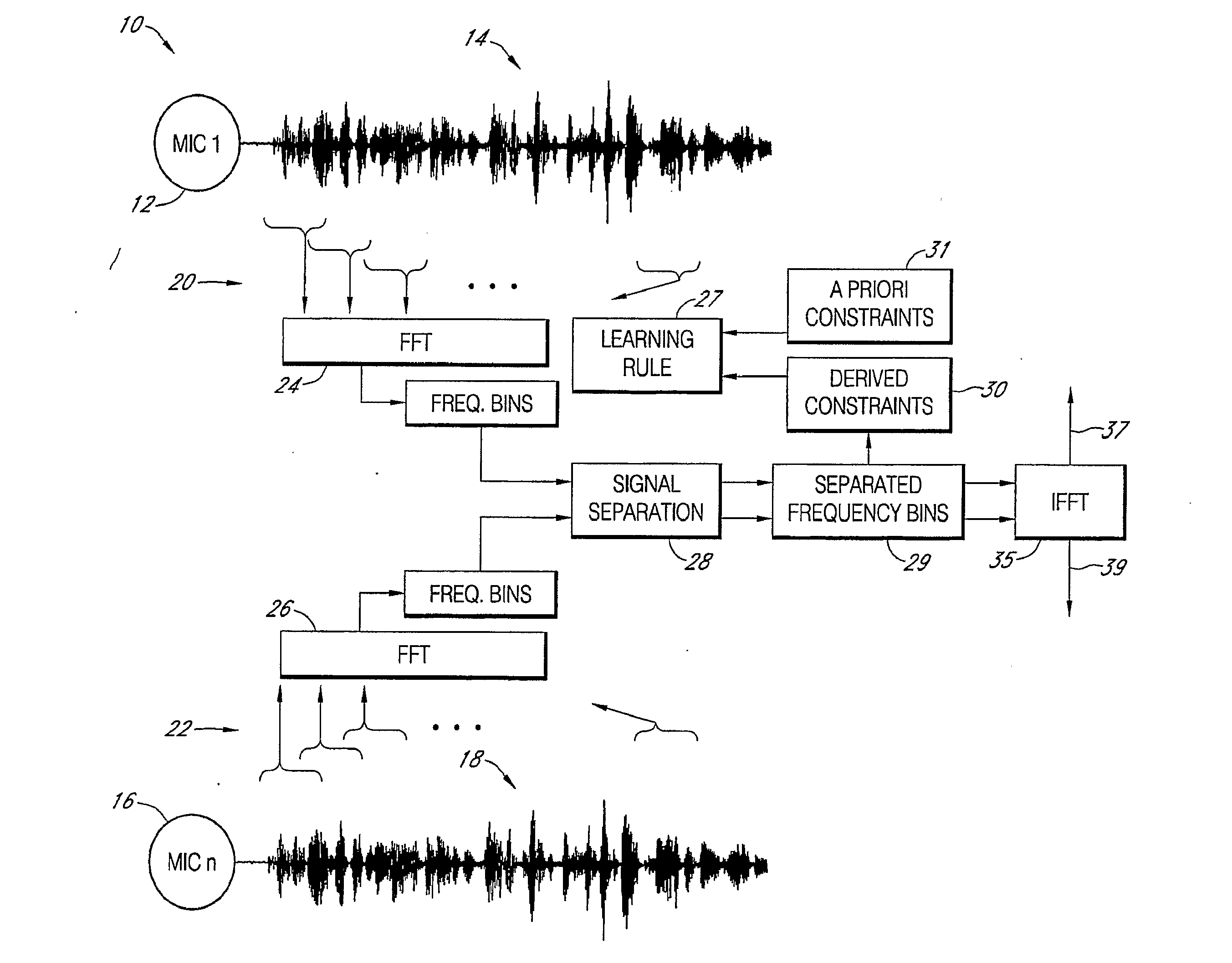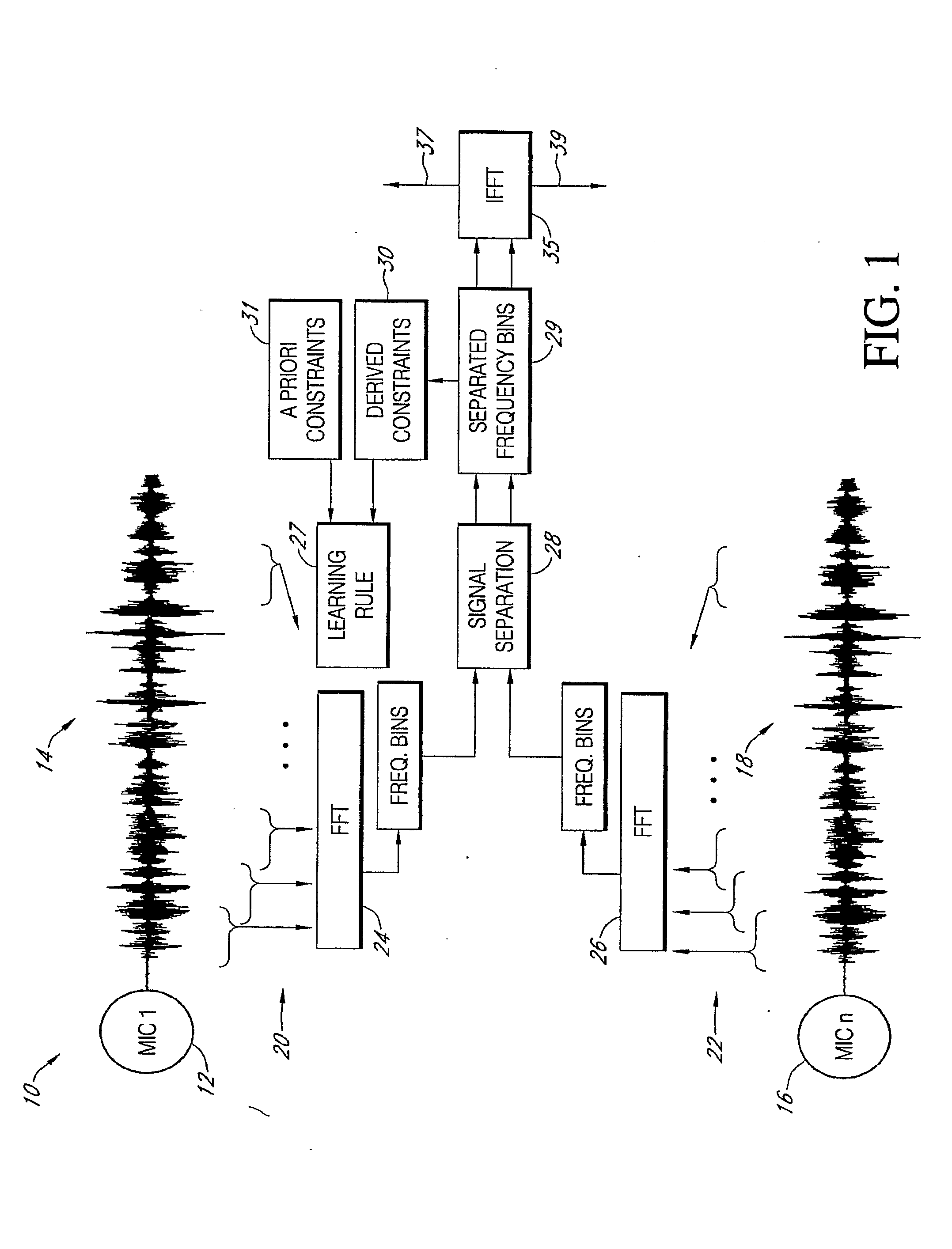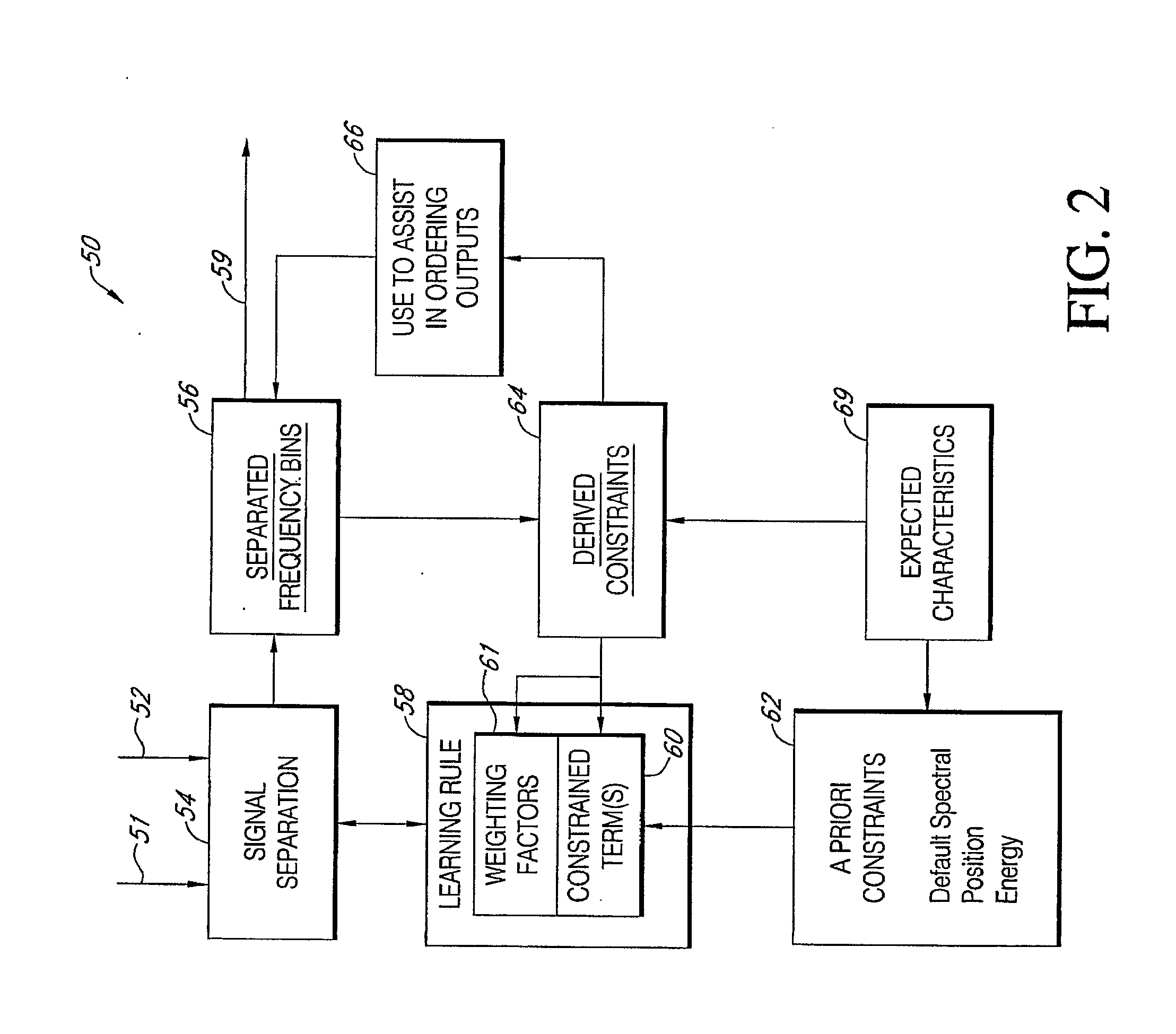System and method for generating a separated signal
- Summary
- Abstract
- Description
- Claims
- Application Information
AI Technical Summary
Benefits of technology
Problems solved by technology
Method used
Image
Examples
Embodiment Construction
[0037]Independent vector analysis (IVA) has been used in signal separation methods and systems. IVA methods may be implemented in the frequency domain, such that time-domain signal mixtures are first transformed into the frequency domain. Signal separation methods may then be applied to each frequency component of the signal mixtures in order to separate output signal mixtures. Learning rules associated with IVA may maintain that separated output signal elements associated with any given frequency be independent, while correlations may exist across frequencies. IVA methods may therefore comprise fully adaptive filters. However, such methods may be prone to converging upon local minimum and maximum. Further, while the learning rules may provide for subbands within an output signal, they may be insufficient for properly identifying all of the signal elements to the correct source.
[0038]In some embodiments, the present invention relates to improving methods and systems comprising indep...
PUM
 Login to View More
Login to View More Abstract
Description
Claims
Application Information
 Login to View More
Login to View More - R&D
- Intellectual Property
- Life Sciences
- Materials
- Tech Scout
- Unparalleled Data Quality
- Higher Quality Content
- 60% Fewer Hallucinations
Browse by: Latest US Patents, China's latest patents, Technical Efficacy Thesaurus, Application Domain, Technology Topic, Popular Technical Reports.
© 2025 PatSnap. All rights reserved.Legal|Privacy policy|Modern Slavery Act Transparency Statement|Sitemap|About US| Contact US: help@patsnap.com



